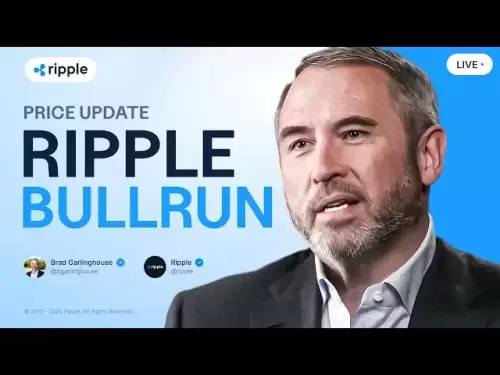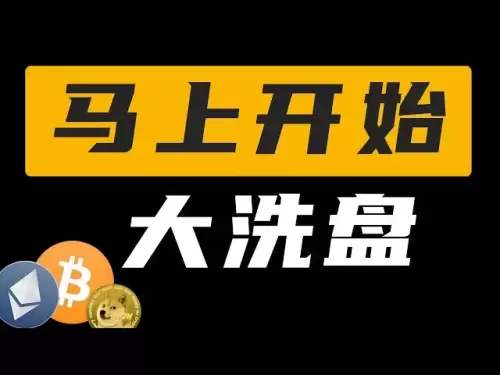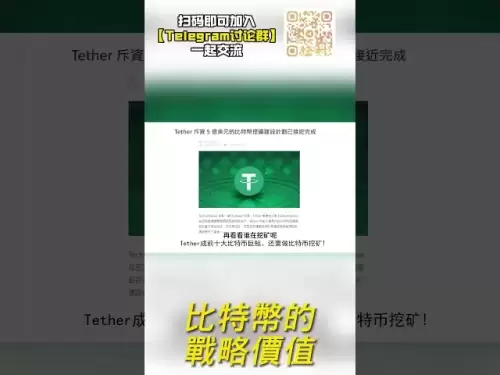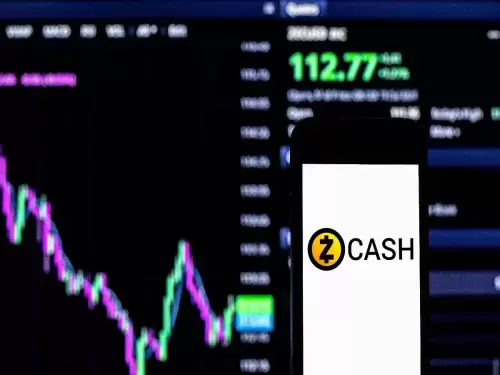 |
|
 |
|
 |
|
 |
|
 |
|
 |
|
 |
|
 |
|
 |
|
 |
|
 |
|
 |
|
 |
|
 |
|
 |
|
Cryptocurrency News Articles
What’s Ahead for Polkadot This Year: From Coretime to JAM
Apr 19, 2025 at 05:30 pm
Polkadot is undergoing a radical evolution in 2025 with the phased rollout of Polkadot 2.0—a strategic overhaul aimed at reshaping how developers build and scale on the network.

Polkadot is rolling out its highly anticipated Polkadot 2.0 upgrade in stages throughout 2025, marking a pivotal moment in the protocol’s evolution. This upgrade signifies a departure from the original model of auctioned parachains, unveiling a more flexible system for accessing blockchain resources on demand.
Instead of requiring projects to win community-backed auctions—which can be time-consuming and competitive—developers can now purchase "Coretime" units directly. This computational power can be used to launch dApps, NFT drops, or Web3 games, presenting a lower barrier to entry for a wider range of projects.
Those units are sold in bundles of five, and the first sale occurred on October 6, with one unit going for 69 DOT, according to data from DeepChain. This creates a secondary market for Coretime, which may become a key factor in the long-term value growth of DOT.
The price of DOT has dropped sharply since the start of 2024, sliding from around $80 in January to its current level of around $45. However, the creation of a vibrant secondary market for Coretime could help to boost the value of DOT in the long term.
The move towards a more market-driven and capital-efficient model comes amid broader concerns about the solvency of Web3 protocols. In mid-2024, Tommy Enenkel, Chief Ambassador at Polkadot, raised concerns about the treasury's financial transparency.
"We have about two years of reserves, but with crypto volatility, that's a snapshot in time," Enenkel said in his report. He added that there was potential for better capital efficiency, including more use of bounties and decentralized collectives.
"We could do more to fund small, focused initiatives through tooling and infrastructure grants," he said.
Following that report, the community backed a plan to lower DOT inflation to 8%, which would reduce the sell pressure on DOT and help to preserve the long-term treasury value.
The shift to JAM is also being driven by a desire to create a more modular and developer-friendly infrastructure.
To promote the adoption of JAM and related technologies, the Web3 Foundation launched a 10M DOT + 100K KSM program to encourage community contributions and accelerate the development of JAM-compatible dApps and tooling.
The initiative kicked off with the JAM Tour in Asia, which saw Gavin Wood and other members of the Polkadot team visit universities, startups, and government organizations in China, Korea, and Japan.
Disclaimer:info@kdj.com
The information provided is not trading advice. kdj.com does not assume any responsibility for any investments made based on the information provided in this article. Cryptocurrencies are highly volatile and it is highly recommended that you invest with caution after thorough research!
If you believe that the content used on this website infringes your copyright, please contact us immediately (info@kdj.com) and we will delete it promptly.
-

-

- Managing Insider Risk Is Critical: Coinbase's Recent Extortion Scheme Targeting Its Support Agents Shows Why
- May 20, 2025 at 10:40 am
- In a recent example of why managing insider risk is critical, cryptocurrency exchange Coinbase announced that it was the target of an extortion scheme enabled by insiders.
-
![After Hitting a Local High of $0.3344 a Week Ago, Stellar [XLM] Has Traded Within a Descending Channel. After Hitting a Local High of $0.3344 a Week Ago, Stellar [XLM] Has Traded Within a Descending Channel.](/assets/pc/images/moren/280_160.png)
- After Hitting a Local High of $0.3344 a Week Ago, Stellar [XLM] Has Traded Within a Descending Channel.
- May 20, 2025 at 10:35 am
- Since hitting a local high of $0.3344 a week ago, Stellar [XLM] has traded within a descending channel. Over the past week, XLM has declined to hit a local high of $0.276.
-

-

-

- US Senate votes to advance a key stablecoin-regulating bill after blocking an attempt to move the bill forward earlier in May over concerns about President Donald Trump's sprawling crypto empire.
- May 20, 2025 at 10:30 am
- A key procedural vote on the Guiding and Establishing National Innovation for US Stablecoins Act, or GENIUS Act, passed in a 66-32 vote on May 20.
-

-

- U.S. Senate Votes to Begin Debate on the Guiding and Establishing National Innovation for U.S. Stablecoins (GENIUS) Act
- May 20, 2025 at 10:25 am
- The U.S. Senate voted late Monday to invoke cloture on the motion to proceed to the Guiding and Establishing National Innovation for U.S. Stablecoins (GENIUS) Act
-

























































![After Hitting a Local High of $0.3344 a Week Ago, Stellar [XLM] Has Traded Within a Descending Channel. After Hitting a Local High of $0.3344 a Week Ago, Stellar [XLM] Has Traded Within a Descending Channel.](/uploads/2025/05/20/cryptocurrencies-news/articles/hitting-local-week-ago-stellar-xlm-traded-descending-channel/682be6f7125f6_image_500_300.webp)



